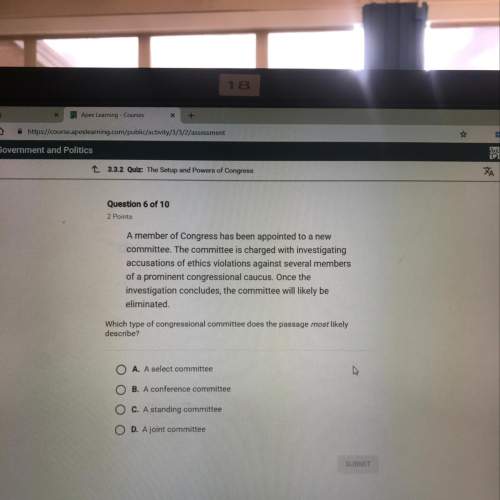
History, 08.04.2021 18:50 MarsBars8798
QUESTION 2
In purely scientific terms, the Mesolithic begins at the end of a period known in geology as the Younger Dryas stadial, the last cold snap, which marks the end of Ice Age, about 9,600 BCE. The Mesolithic period ends when agriculture starts. This is the time of the late hunter-gatherers. Because agriculture developed at different times in different regions of the world, there is no single date for the end of the Mesolithic period. Even within a specific region, agriculture developed during different times. For example, agriculture first developed in Southeast Europe about 7,000 BCE, in Central Europe about 5,500 BCE, and Northern Europe about 4,000 BCE. All these factors make the chronological limits of the Mesolithic somehow fuzzy. Moreover, some regions do not have a Mesolithic period. An example is the Near East, where agriculture was developed around 9,000 BCE, right after the end of the Ice Age.
During the Mesolithic period, important large-scale changes took place on our planet. As the climate was getting warmer and the ice sheets were melting, some areas in the northern latitudes rose as they were being freed from the weight of the ice. At the same time, the sea levels rose, drowning low-lying areas, resulting in major changes in the land worldwide: the Japanese islands were separated from the Asian mainland, Tasmania from Australia, the British Isles from continental Europe, East Asia and North America became divided by the flooding of the Bering Strait, and Sumatra separated from Malaysia with the correspondent formation of the Strait of Malacca. Around 5,000 BCE, the shape of the continents and islands was very much those of the present day.
Q2: How did transition of climate in Pre-Historic period transform the geography of the world? Identify at least 3 changes. (5 Marks, 5 lines of Blackboard).
The municipal system was an undeniable aid to Roman expansion: it furnished a useful pretext for intervention to “liberate” oppressed towns; and moreover, since the towns retained their spirit of particularism and did not all combine against the foreigner, they offered less resistance to a truly centralized state; even the barbarian clans, notwithstanding the instability of their alliances, proved much harder to subdue.
They had also a second resource: the establishment, especially in countries just annexed, of colonies which served as centers of influence and masked garrisons, some being composed of veteran legionaries, Roman citizens, others of recruits from the auxiliary corps who were merely Latins. Into both alike the native population gradually penetrated by a process of selection. Their constitution was modeled on that of Rome. Except for this group, all the various centers of population formed the mass of “peregrine” or “alien” cities. At the bottom of the scale were the tributary or “subject” cities, distinguished by the tribute they had to pay; what remained to them of independence de facto was a gracious concession, though Rome benefited by making it. Above these ranked the free cities, which differed from them less than one would have supposed, because their exemption from paying tribute was never complete, and even their freedom might be revoked; nothing could be more uncertain than the idea of autonomy, to which the Greeks were passionately devoted. Still higher, in theory, were the allied cities, whose independence was no greater but was deemed to have a better guarantee because it originated in a treaty; but this was in truth only a verbal distinction, for on the slightest provocation Rome would undertake to prove that such and such a city had broken the contract.
Q3: After reading the above passage, what is your understanding about the urban layout or pattern of Roman Empire? Identify them. (5 Marks, 5 Lines

Answers: 2


Another question on History

History, 21.06.2019 16:20
Which of the following describes the interactions between muslim and hindu societies in the ind around 1000 ad? they peacefully coexisted. the muslim invaders saw the hindu as a people to subdue and rule over the hindu's violence suppressed muslim attempts of conversion the invading islamic forces used the treasures of hindu culture to build their own empire the islamic invaders allowed the hindus to continue to worship as they chose despite pressures to convert next question ask for
Answers: 2

History, 22.06.2019 03:00
How and why did british north american colonists fight a revolution to create a constitutional republic, the united states of america?
Answers: 1

History, 22.06.2019 03:30
Which statement best summarizes how interpreted in very strict terms government have changed over time
Answers: 1

History, 22.06.2019 09:00
When using the scientific method, what should be the first step? a.) gathering information on the problem. b.) stating the problem. c.) analyzing and interpreting data.
Answers: 2
You know the right answer?
QUESTION 2
In purely scientific terms, the Mesolithic begins at the end of a period known in geolog...
Questions

Physics, 19.11.2020 19:00




Mathematics, 19.11.2020 19:00

Mathematics, 19.11.2020 19:00

Social Studies, 19.11.2020 19:00

Mathematics, 19.11.2020 19:00

Mathematics, 19.11.2020 19:00

Mathematics, 19.11.2020 19:00







History, 19.11.2020 19:00

Mathematics, 19.11.2020 19:00

Mathematics, 19.11.2020 19:00





